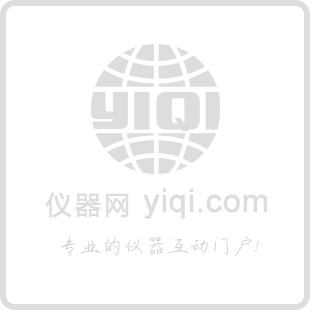货号:
BH-K22118
保存条件:
Store at -20 °C
浓度:
1mg/1ml
应用范围:
WB=1:100-500 ELISA=1:500-1000 IP=1:20-100 IHC-P=1:100-500 IHC-F=1:100-500 Flow-Cyt=1:100-500 IF=1:100-500
形态:
详见说明书
亚型:
IgG
免疫原:
KLH conjugated synthetic peptide derived from human TSHR N-terminus
适应物种:
详见说明书
宿主:
详见说明书
标记物:
详见说明书
抗体名:
促甲状腺素受体抗体(N端)使用说明书
抗体英文名:
Anti-TSHR (NT)
保质期:
详见说明书
抗原来源:
Rabbit
克隆性:
多克隆
目录编号:
详见说明书
级别:
详见说明书
靶点:
详见说明书
数量:
大量
供应商:
上海博湖
规格:
0.2ml/200μg
英文名称 Anti-TSHR (NT)
中文名称 促甲状腺素受体抗体(N端)使用说明书
别 名 hTSHR I; hTSHRI; LGR 3; LGR3; MGC75129; Thyroid adenoma hyperfunctioning; Thyroid carcinoma with thyrotoxicosis; Thyroid Stimulating Hormone Receptor; Thyrotropin Receptor; Thyrotropin receptor I; TSH R; TSHR; TSHR_HUMAN. 浓 度 1mg/1ml
浓 度 1mg/1ml
规 格 0.1ml/100μg 0.2ml/200μg
抗体来源 Rabbit
克隆类型 polyclonal
交叉反应 Human, Mouse, Rat, Dog, Cow, Sheep
产品类型 一抗
研究领域 免疫学 神经生物学 信号转导 生长因子和激素 细胞膜受体
蛋白分子量 predicted molecular weight: 86kDa
性 状 Lyophilized or Liquid
免 疫 原 KLH conjugated synthetic peptide derived from human TSHR N-terminus
亚 型 IgG
纯化方法 affinity purified by Protein A
储 存 液 0.01M PBS, pH 7.4 with 10 mg/ml BSA and 0.1% Sodium azide 促甲状腺素受体抗体(N端)使用说明书产品应用 WB=1:100-500 ELISA=1:500-1000 IP=1:20-100 IHC-P=1:100-500 IHC-F=1:100-500 Flow-Cyt=1:100-500 IF=1:100-500
促甲状腺素受体抗体(N端)使用说明书产品应用 WB=1:100-500 ELISA=1:500-1000 IP=1:20-100 IHC-P=1:100-500 IHC-F=1:100-500 Flow-Cyt=1:100-500 IF=1:100-500
(石蜡切片需做抗原修复)
not yet tested in other applications.
optimal dilutions/concentrations should be determined by the end user.
保存条件 Store at -20 °C for one year. Avoid repeated freeze/thaw cycles. The lyophilized antibody is stable at room temperature for at least one month and for greater than a year when kept at -20°C. When reconstituted in sterile pH 7.4 0.01M PBS or diluent of antibody the antibody is stable for at least two weeks at 2-4 °C.
Important Note This product as supplied is intended for research use only, not for use in human, therapeutic or diagnostic applications.
产品介绍 The glycoprotein hormone receptor family consists of the luteinizing hormone receptor, the follicle-stimulating hormone receptor, and the thyroid stimulating hormone(TSH) receptor. TSH, which is released from the pituitary gland, binds to the TSH receptor on thyroid cells to control size and function of the thyroid gland (De Felice et al. 2004). The TSH receptor signals through Gs to elevate intracellular cAMP in the thyroid gland, which regulates iodide uptake, and transcription of thyroglobulin (Tg), thyroid peroxidase (TPO), and sodium-iodide symporter. The TSH receptor also signals Gq and phospholipase C to regulat iodide efflux, H2O2 production, and thyroglobulin iodination. Autoimmunity to the TSH receptor causes hyperthyroidism (Graves disease) or hypothyroidism (Hashimoto thyroiditis) when the autoantibodies function as agonists or antagonists, respectively, at the TSH receptor (Rapoport and McLachlan, 2001; Davies et al., 2002). Millipore’s cloned human TSH receptor-expressing cell line is made in the Chem-10 host, which supports high levels of recombinant TSH receptor expression on the cell surface and contains high levels of the promiscuous G protein to couple the receptor to the calcium signaling pathway. Thus, the cell line is an ideal tool for screening for antagonists of interactions between TSH and its ligands.Function : Receptor for thyrothropin. Plays a central role in controlling thyroid cell metabolism. The activity of this receptor is mediated by G proteins which activate adenylate cyclase. Also acts as a receptor for thyrostimulin (GPA2+GPB5).Subunit : Interacts (via the PDZ-binding motif) with SCRIB; regulates TSHR trafficking and function.Subcellular Location : Cell membrane; Multi-pass membrane protein.Tissue Specificity : Expressed in the thyroid.DISEASE : Note=Defects in TSHR are found in patients affected by hyperthyroidism with different etiologies. Somatic, constitutively activating TSHR mutations and/or constitutively activating G(s)alpha mutations have been identified in toxic thyroid nodules (TTNs) that are the predominant cause of hyperthyroidism in iodine deficient areas. These mutations lead to TSH independent activation of the cAMP cascade resulting in thyroid growth and hormone production. TSHR mutations are found in autonomously functioning thyroid nodules (AFTN), toxic multinodular goiter (TMNG) and hyperfunctioning thyroid adenomas (HTA). TMNG encompasses a spectrum of different clinical entities, ranging from a single hyperfunctioning nodule within an enlarged thyroid, to multiple hyperfunctioning areas scattered throughout the gland. HTA are discrete encapsulated neoplasms characterized by TSH-independent autonomous growth, hypersecretion of thyroid hormones, and TSH suppression. Defects in TSHR are also a cause of thyroid neoplasms (papillary and follicular cancers).Similarity : Belongs to the G-protein coupled receptor 1 family. FSH/LSH/TSH subfamily.Contains 7 LRR (leucine-rich) repeats.Database links : UniProtKB/Swiss-Prot: P16473.2TSHR是垂体前叶嗜碱细胞分泌的一种糖蛋白,直接作用于甲状腺,并能影响其结构功能。该抗体主要用于垂体肿瘤功能性分类的研究。 促甲状腺素受体抗体(N端)使用说明书具有全、新、优、品、好四大特点:
促甲状腺素受体抗体(N端)使用说明书具有全、新、优、品、好四大特点:
全:公司提供上万种产品,涵盖了生物试剂,elisa试剂盒,标准品,培养基,原装耗材,抗体、培养基、ATCC细胞等,基本上各种科研所需产品在我司都能找到。
新:产品更新速度较快,基本上每周都有新产品出现。
优:产品质量好,投诉比较少。
好:我公司具有优质的技术团队,产品一旦售出,实验过程中遇到困难可提供在线技术咨询。使您使用产品时没有任何的后顾之忧。
我们提供的标记服务,可根据您科研的需求,满足您的需要,质量保证,价格合理。
一、标记流程
委托标记服务,请下载并详细填写《委托标记申请单》,待我公司标记室技术人员研究、确认后答复,并办理委托标记事宜。
二、各种标记物制备的收费标准(RMB)
我们不但提供抗体和大分子蛋白的标记服务,还提供小分子多肽及小分子蛋白的各种标记服务,提供标记化合物的服务(此化合物必须适用于标记),价格另议。
一抗和二坑的区别:
抗体就是平常所说的抗体,即能和抗原特异性结合。
第二抗体是能和抗体结合的,即抗体的抗体。主要用于检测抗体的存在。
一抗是针对抗原的抗体,二抗是针对一抗的抗体。即抗体也可以充当抗原刺激机体产生抗体。也就是说,抗原进入机体刺激机体免疫系统产生免疫应答,由B细胞可以产生与相应抗原发生特异性结合的特殊蛋白质。
一抗二抗都是一种可以特异结合别的物质的基团,而且一抗可以至少结合两种其他基团(底物和二抗)。
一抗:可以特异结合底物,就是识别出我们想要检测的东西。一抗和底物结合与否用肉眼是看不出来的。
二抗:可以和一抗结合,并带有可以被检测出的标记(如带荧光、放射性、化学发光或显色基团),作用是检测一抗。 如果一抗自己带有可以被检测出的标记(如带荧光、放射性、化学发光或显色基团),则不需要二抗。但这样成本很高,因为一种一抗只识别一种底物。所以如今的设计一般是二抗带上可检测标记,再来检测一抗。而一抗识别底物。这样,当一抗结合到底物上,就可以通过二抗检测出来。  细胞色素P450 2D6抗体1号染色体开放阅读框186抗体乳腺癌相关抗原抗体细胞分裂周期相关蛋白4抗体细胞色素b5抗体
细胞色素P450 2D6抗体1号染色体开放阅读框186抗体乳腺癌相关抗原抗体细胞分裂周期相关蛋白4抗体细胞色素b5抗体
睾丸疾病组织芯片,仅供科研睾丸,仅供科研肝肿瘤,仅供科研肝脏,仅供科研肝硬化与肝炎组织芯片,仅供科研
βA3/A1-crystallin蛋白抗体 Anti-beta Crystallin A3 WB IHC-P IHC-F IF 100ulγS-crystallin蛋白抗体 Anti-Beta crystallin S WB IHC-P IHC-F IF 100ul1号染色体开放阅读框85抗体 Anti-C1orf85 WB IHC-P IHC-F IF 100ul1号染色体开放阅读框87抗体 Anti-C1orf87 WB IHC-P IHC-F IF 100ul1号染色体开放阅读框95抗体 Anti-C1ORF95 WB IHC-P IHC-F IF 100ul
牛津琼脂基础26060用于单核增生李斯特氏菌的选择性分离(SN0005)。胰蛋白示盐肉汤 (CM0283) Oxoid incubation media 胰蛋白示盐肉汤 (CM0283) Oxoid珊瑚色诺卡氏菌 除光学仪器外的防霉试验菌。 支/瓶普通琼脂250g用于一般细菌培养、转种、增菌、复壮等AgarmediumF
PentaneAmidinespolymyxinBagarbaseDEV tryptophan broth DEV色酸肉汤 1.10694.0500 MERCK默克 incubation media DEV tryptophan broth DEV色酸肉汤 1.10694.0500 MERCK默克苄青霉素麦康凯配套试剂 10支/盒 用于致病性嗜水气单胞菌的选择性分离培养(SN/T 0751-2010)恒河猴间质干细胞成脂诱导分化培养基BonemarrowmesenchymalstemcellsiGangesRIvermonkeydifferentiationmediuminducedlipidTrypticaseSoy-YeastExtractAgar
促甲状腺素受体抗体(N端)使用说明书包姜氏培养基(不含琼脂)250g用于百日咳菌分离培养麦康凯肉汤 选择性培养基,用于水、食品中革兰氏阴性、乳糖发酵大肠杆菌群的检测 500g incubation media 麦康凯肉汤 选择性培养基,用于水、食品中革兰氏阴性、乳糖发酵大肠杆菌群的检测 500g长根菇(长根奥德磨) 食用、YY。 支/瓶布氏肉汤添加剂(2ml/支)2ml/支*5添加于HBJ014中霉菌培养基 250g 用于药品,生物制品霉菌无菌试验(GB标准)促甲状腺素受体抗体(N端)使用说明书是用于化学反应、分析化验、研究实验、教学实验、化学配方使用的纯净化学品,产品品质,价格实惠,多种规格供应,售后完善。
 促甲状腺素受体抗体(N端)使用说明书
促甲状腺素受体抗体(N端)使用说明书
 Anti-TSHR (NT)抗体-促甲状腺素受体抗体TSHR (NT)抗体-促甲状腺素受体抗体说明书
Anti-TSHR (NT)抗体-促甲状腺素受体抗体TSHR (NT)抗体-促甲状腺素受体抗体说明书
 人抗促甲状腺素受体抗体(TRAb) ELISA 试剂盒 人抗促甲状腺素受体抗体(TRAb) ELISA 试剂盒供应商
人抗促甲状腺素受体抗体(TRAb) ELISA 试剂盒 人抗促甲状腺素受体抗体(TRAb) ELISA 试剂盒供应商
 大鼠抗促甲状腺素受体抗体(TRAb)ELISA试剂盒 大鼠抗促甲状腺素受体抗体(TRAb)ELISA 试剂盒供应商
大鼠抗促甲状腺素受体抗体(TRAb)ELISA试剂盒 大鼠抗促甲状腺素受体抗体(TRAb)ELISA 试剂盒供应商
 小鼠抗促甲状腺素受体抗体(TRAb)ELISA试剂盒 小鼠抗促甲状腺素受体抗体(TRAb)ELISA 试剂盒供应商
小鼠抗促甲状腺素受体抗体(TRAb)ELISA试剂盒 小鼠抗促甲状腺素受体抗体(TRAb)ELISA 试剂盒供应商
 大鼠抗促甲状腺素受体抗体试剂盒价,大鼠抗促甲状腺素受体抗体试剂盒技术参数
大鼠抗促甲状腺素受体抗体试剂盒价,大鼠抗促甲状腺素受体抗体试剂盒技术参数
 小鼠抗促甲状腺素受体抗体试剂盒价,山东小鼠抗促甲状腺素受体抗体试剂盒
小鼠抗促甲状腺素受体抗体试剂盒价,山东小鼠抗促甲状腺素受体抗体试剂盒
 TRAb 抗促甲状腺素受体抗体试剂盒,人抗促甲状腺素受体抗体(TRAb) ELI...
TRAb 抗促甲状腺素受体抗体试剂盒,人抗促甲状腺素受体抗体(TRAb) ELI...
 TRAb 抗促甲状腺素受体抗体,人抗促甲状腺素受体抗体(TRAb) ELISA试...
TRAb 抗促甲状腺素受体抗体,人抗促甲状腺素受体抗体(TRAb) ELISA试...
 KB4149A 小鼠抗促甲状腺素受体抗体Elisa试剂盒,抗促甲状腺素受体抗体测试盒,...
KB4149A 小鼠抗促甲状腺素受体抗体Elisa试剂盒,抗促甲状腺素受体抗体测试盒,...
 人抗促甲状腺素受体抗体(TSHRAb)elisa试剂盒/人抗促甲状腺素受体抗体(TSHRAb)
人抗促甲状腺素受体抗体(TSHRAb)elisa试剂盒/人抗促甲状腺素受体抗体(TSHRAb)
 小鼠抗促甲状腺素受体抗体(TRAb)elisa试剂盒/小鼠抗促甲状腺素受体抗体(TRAb)
小鼠抗促甲状腺素受体抗体(TRAb)elisa试剂盒/小鼠抗促甲状腺素受体抗体(TRAb)